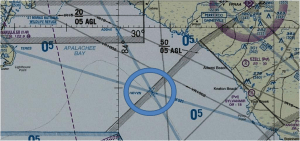
I admit it, my early training in physics has made me irritatingly sensitive to the principle of parsimony.
Parsimony, pronounced similarly to “alimony”, can be summed up by the following: the simplest approach to understanding nature should be considered before contemplating a more complicated line of reasoning. In a famous example, it is more probable that planets, including the Earth, orbit around the sun than the visible planets and the sun orbit around the Earth. Of course, in a different time that probability was not obvious to the common man. But then they hadn’t been thinking about parsimony.
Thank-goodness someone (Nicolaus Copernicus) did.
In the search for habitable exoplanets (planets outside of our solar system), the following statement was recently made by astronomer Steve Vogt in response to a storm of skepticism about a potentially habitable planet. “I do believe that the all-circular-orbits solution is the most defensible and credible,” he said. “For all the reasons I explain in detail … it wins on account of dynamic stability, goodness-of-fit, and the principle of parsimony (Occam’s Razor; in Latin, lex parsimoniae).”
http://www.space.com/16673-gliese-581g-habitable-planet-existence.html
William of Occam (also Ockham) was an English theologian of the 14th century. He did not invent the premise behind his razor, but he famously used it to slice through the complicated philosophies of the day and rebut them by an unfaltering demand for simplicity over complexity.

Medical students are taught essentially the same principle, albeit using different words: “When you hear hoof-beats, don’t think of zebras.” Wise physicians know that occasionally zebras do show themselves, but they should not be the first thought when a patient presents with unusual symptoms.
If simplicity is to be generally preferred over complexity, then an example in the diving literature comes to mind. This example annoys me to no end, but I’m slowly coming to terms with it. It is the growing popularity of referring to the respiratory effort required to breathe through a scuba regulator or a closed-circuit underwater breathing apparatus (a rebreather) as work (in joules, J) per tidal volume in liters, L.
When work in joules (J) is divided by volume (L), dimensionally the result is pressure (kiloPascals, kPa). To be exact, what is often called work of breathing in diving is actually the average pressure exerted by a person over the entire volume of a breath. The principal of parsimony says that if it is a pressure, if it has units of pressure, then we should call it a pressure (kPa) and not something more complicated, such as Work of Breathing specified with units of J/L.

(Examples in the regulatory diving literature correctly using Work of Breathing with units of joules can be found in early editions of NATO STANAG 1410. EN250:2000 is an example using the units of J/L for work.)
I find in my dealings with non-respiratory physiologists, that the concept of work of breathing is difficult to grasp since mathematically it involves a definite integral of pressure over a change in volume. I have made various attempts to simplify the concept, but I still find knowledgeable medical professionals misunderstanding it. In fact, mathematical integrals seem to be as frightening to most physicians as poorly dissected cadavers would be to laymen. Even engineers who certainly should grasp the intricacies of work and power end up confused.
I’m sure it adds to the confusion when some diving physiologists speak in quotients. For example, since a cubit is a length of 48 cm, and a hectare is 2.47105 acres, you could describe a person’s height as 165,400 cubic cubits/hectare. Dimensionally, that would be correct for a six foot (1.8 m) tall individual. However, most people would prefer the units of feet or meters rather than cubic cubits per hectare. Certainly, the simpler description is far more parsimonious than the former.

For the same reason, it makes more sense to speak of a descriptor with units of pressure as simply pressure (kPa) rather than a quotient of work per liter (Joules/L).
If describing a simple parameter like pressure as a quotient is not defensible scientifically, is it defensible psychologically?
Maybe. The U.S. Navy has used terms like “resistive effort” to convey the impression that a volume-averaged pressure is something that can be sensed by a diver. To breathe, divers have to generate a pressure in their chest, and that pressure generation requires effort.
“Effort” is admittedly not a hard-science term: it doesn’t even pretend to be. However, the use of “Work of Breathing” connotes hard science; the concept of work is pure physics. But as I have shown, the way it is increasingly used in diving is not pure physics at all. So its use is misleading in the eyes of a purist, and undoubtedly confusing to a young engineer or physicist.
But to a diver, does it matter? Does it somehow make sense? Do divers care about parsimony?
Well, I have yet to find anyone who does not intuitively understand the notion of the work involved in breathing. If they have asthma, or have tried breathing through a too long snorkel, they sense the work of breathing. So I imagine that the inexactitude of J/L is of no import to divers.
However, I also believe that the over-complication of an arguably simple concept should be just as unappealing to designers of underwater breathing apparatus as it was to William of Occam or, for that matter, the designer of the Cosmos.







































